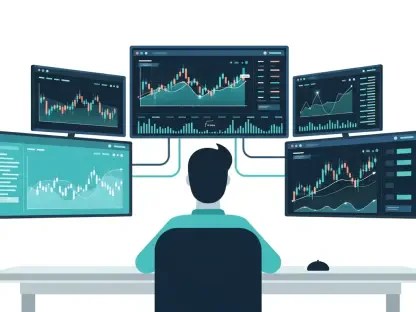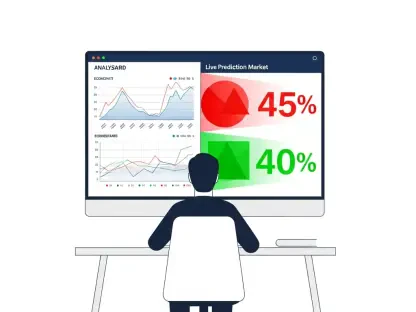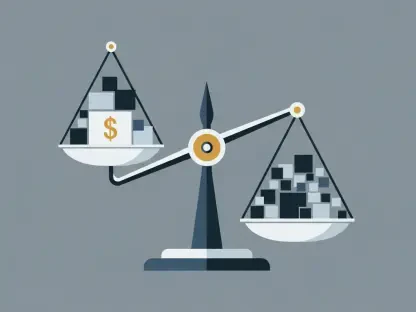The impending evolution in Social Security payments signifies a considerable transformation towards digital modernization. Starting September 30, a new executive order instituted earlier in March by President Donald Trump will eliminate paper-based payments for all federal disbursements, which includes Social Security. The order, titled “Modernizing Payments To and From America’s Bank Account,” aims to enhance efficiency and safety, particularly by mitigating the theft and fraud associated with mailed checks. This transition underscores a global movement towards digital transactions, aligning with worldwide digitization trends. The risks associated with paper checks, such as being easily lost, stolen, or altered, highlight the necessity for this shift. By mandating the use of electronic funds transfers (EFTs), the government intends to harness the benefits of technology to safeguard finances and improve service delivery. This fundamental change raises questions about its implications for the nation’s most vulnerable citizens and how effectively digitalization will ramp up security and streamline processes.
An Era of Efficiency and Security
The financial implications of moving from paper to digital transactions spotlight a crucial advantage: cost reduction. Maintaining infrastructure for paper records burdens taxpayers with over $657 million. The switch to electronic methods like direct deposits, digital wallets, and debit and credit payments dramatically cuts down these substantial costs and promotes efficiency. The strategy represents a drive to modernize financial operations in tune with technological advancement, ensuring that outdated systems no longer siphon off valuable resources. However, the real challenge lies in balancing these innovations with the realities faced by certain segments of the population. While the new system promises faster and safer payment methods, it also requires robust digital infrastructure and cybersecurity measures that can protect sensitive information from breaches. The need to invest in security technologies cannot be overstated, as the potential risks of cyber theft and fraud pose substantial concerns for digital operations.
This shift is a testament to the broader discourse on digitization within government operations and how it can potentially revolutionize service delivery. It offers a glimpse into a future where automation, blockchain technology, and AI may further enhance security and efficiency. But as promising as these prospects might be, vigilance is necessary to guard against emerging digital threats. Therefore, ensuring the safety of digital transactions becomes just as paramount as implementing them, with a focus on safeguarding against both existing and evolving cybersecurity threats. This transformation requires not only technological upgrades but also continuous updates to cybersecurity protocols that can adapt to and defend against sophisticated cyber-attacks.
Challenges for Vulnerable Populations
The transition toward digital payments, while beneficial, brings considerable challenges, particularly for the less than 1% of recipients who still receive paper checks. Among them are senior citizens, disabled individuals, and residents of rural areas—demographics that may face obstacles in accessing electronic payment systems. Critics of the move to a fully digital setup emphasize that populations lacking internet access or facing cognitive barriers could be further marginalized. The assumption that all individuals effortlessly possess the resources and skills to navigate digital technology ignores the digital divide. This divide can leave some recipients at a disadvantage, indicating a need for the Social Security Administration to consider these factors seriously.
To address these concerns, solutions must include robust support systems tailored to assist the unbanked or those without regular internet access. Moreover, emphasizing financial literacy initiatives will be essential to bridge this divide, ensuring all beneficiaries understand and can use new technology confidently. Beyond the practical hurdles, this demographic’s transition to a digital format must account for emotional resistance to change and fears surrounding financial safety and personal information privacy. It necessitates strategies that involve community engagement and advocacy to build trust and assurance.
Moving Forward with Caution
The upcoming shift in Social Security payments signifies a significant move towards embracing digital technology. Beginning on September 30, President Donald Trump’s executive order from March will end the use of paper payments for all federal transactions, including Social Security. The order, called “Modernizing Payments To and From America’s Bank Account,” is designed to boost efficiency and security by reducing theft and fraud linked to mailed checks. This change is part of a larger, global trend towards digital transactions, in line with worldwide technological advancements. Traditional paper checks pose risks such as being lost, stolen, or altered, which emphasizes the need for this transition. By requiring electronic funds transfers (EFTs), the government aims to leverage technology’s advantages to protect finances and enhance service delivery. However, this change poses questions about its impact on the nation’s most vulnerable citizens and how effectively this digital shift will enhance security and operational efficiency.









